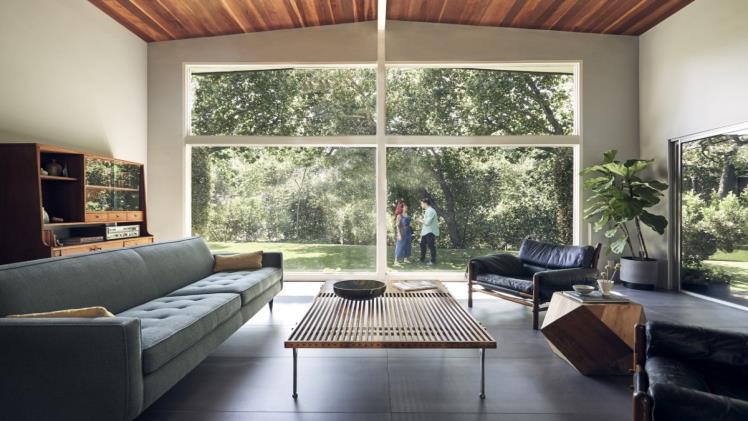Introduction
Natural light is more than just a design preference—it’s a powerful element that can transform your home. From making rooms feel more spacious and inviting to improving your mood and reducing energy costs, daylight plays a crucial role in home comfort and wellness.
If your home feels dim or closed off, don’t worry. You don’t need a full renovation to enjoy the benefits of sunlight indoors. This article explores practical, stylish, and budget-friendly ways to maximize natural light in your home.
1. Use Light and Reflective Colors
One of the easiest and most effective ways to brighten a space is by choosing the right color palette.
- Light wall colors like white, off-white, soft gray, or pale beige reflect light rather than absorb it.
- Glossy or satin finishes for paint can help bounce light around the room more than matte finishes.
- For ceilings, pure white paint creates the illusion of higher ceilings and enhances light diffusion.
Tip: Avoid dark or heavily saturated colors in smaller rooms, as they tend to absorb light and make the space feel smaller and darker.
2. Install or Upgrade Mirrors
Mirrors act like windows by reflecting both light and views, making a space appear larger and brighter.
- Place a mirror opposite a window to reflect light deeper into the room.
- Use large, wall-mounted mirrors in hallways or dark corners.
- Choose furniture or decor with mirrored or reflective surfaces, like a glass coffee table or metallic frames.
3. Clean Your Windows Regularly
It may sound simple, but dirty windows block light. Smudges, dust, and debris can reduce natural light significantly.
Quick tips:
- Wipe both the interior and exterior of your windows every few weeks.
- Remove heavy window screens if not needed year-round.
- Use a vinegar-water solution for a streak-free shine.
4. Use Sheer or Minimal Window Treatments
Heavy drapes and blackout curtains block sunlight, even when open.
- Opt for sheer curtains that let sunlight in while maintaining privacy.
- Consider light-filtering blinds or shades for more control.
- If privacy isn’t a concern, go for bare windows or simple valances.
Bonus tip: Install curtain rods a few inches above and outside the window frame to allow full window exposure when curtains are drawn.
5. Rearrange Furniture to Open Sightlines
Bulky furniture placed in front of windows or light sources can block sunlight from flowing through the space.
- Keep windows clear of obstructions like sofas or tall cabinets.
- Use low-profile furniture to maintain an open, airy feel.
- Place mirrors or glass-topped tables where they can catch and reflect light.
6. Choose Glass or Open Design Elements
Replacing solid doors with glass-paneled doors, or adding open shelving in place of upper cabinets, can allow light to travel more freely between rooms.
Other ideas:
- Use glass partitions instead of full walls to divide spaces.
- Incorporate transom windows or skylights where possible.
- Use furniture with open legs and transparent materials like acrylic or glass.
7. Bring in Reflective Decor and Materials
Certain textures and finishes can enhance natural light.
- Use metallic accents (gold, silver, chrome) in decor.
- Choose glossy tiles or light wood floors.
- Include decor items like crystal light fixtures, glass vases, or metallic artwork.
These elements don’t just add style—they reflect and amplify daylight throughout the room.
8. Trim Outdoor Landscaping
Sometimes the problem isn’t inside—overgrown trees or bushes outside your windows can block sunlight from entering.
- Trim or reshape shrubs and tree branches near windows.
- Choose lower-maintenance plants that don’t obstruct light.
- If planting new landscaping, consider the sun’s path throughout the day.
9. Add Skylights or Solar Tubes
If your budget allows, adding a skylight or tubular daylighting device (solar tube) is an excellent way to bring in more natural light—especially in interior rooms like bathrooms, hallways, or closets.
Skylights and solar tubes:
- Increase light without sacrificing privacy
- Improve energy efficiency by reducing lighting needs
- Can enhance resale value
10. Use a Light-Focused Interior Design Style
Certain design aesthetics naturally promote light and openness.
- Scandinavian and minimalist designs emphasize white walls, clean lines, and natural materials.
- Coastal and Mediterranean styles often feature airy fabrics and bright color schemes.
- Choose a decor style that complements your space while encouraging a light, relaxed feel.
Conclusion
Maximizing natural light in your home isn’t just about aesthetics—it’s a lifestyle choice that promotes wellness, energy efficiency, and visual comfort. With simple changes like using mirrors, choosing light paint colors, and decluttering window areas, you can transform even the darkest corner into a bright and inviting space.
By combining thoughtful design with practical strategies, you’ll make the most of what nature offers—right through your windows.
FAQs: How to Maximize Natural Light in Your Home
1. Why is natural light important in a home?
Natural light improves mood, increases productivity, enhances interior aesthetics, and can reduce the need for artificial lighting—lowering energy bills and promoting better health.
2. What are the easiest ways to increase natural light indoors?
Start by using light-colored paint, adding mirrors, cleaning your windows regularly, and choosing sheer or minimal window treatments to allow more sunlight in.
3. Can furniture placement affect natural light?
Yes. Placing large or bulky furniture in front of windows can block sunlight. Opt for low-profile or open-legged furniture and keep window areas clear to let light flow freely.
4. Do mirrors really help reflect natural light?
Absolutely. Mirrors bounce light around a room, making it feel brighter and larger. Placing a mirror opposite or adjacent to a window can significantly increase natural light.
5. What type of window treatments are best for letting in light?
Sheer curtains, light-filtering blinds, or even no coverings at all (where privacy allows) are ideal for maximizing daylight.
6. Are skylights and solar tubes worth the investment?
Yes, if your budget allows. Skylights and solar tubes bring natural light into interior rooms that lack windows, such as bathrooms or hallways, and can improve your home’s energy efficiency and resale value.
7. How does exterior landscaping affect natural light indoors?
Overgrown trees or bushes near windows can block sunlight from entering your home. Trimming back landscaping can make a noticeable difference in indoor brightness.
8. What interior design styles enhance natural light?
Styles like Scandinavian, minimalist, and coastal interiors are known for maximizing light. They use white or neutral palettes, clean lines, and uncluttered spaces to reflect and enhance natural brightness.
9. How often should I clean my windows to improve natural light?
Ideally, clean your windows (inside and out) every 1–2 months. Dirt and grime can significantly reduce the amount of light that passes through.
10. Can natural light help reduce electricity costs?
Yes. Maximizing natural light reduces your reliance on artificial lighting during the day, which can lower your electricity bill and benefit the environment.





